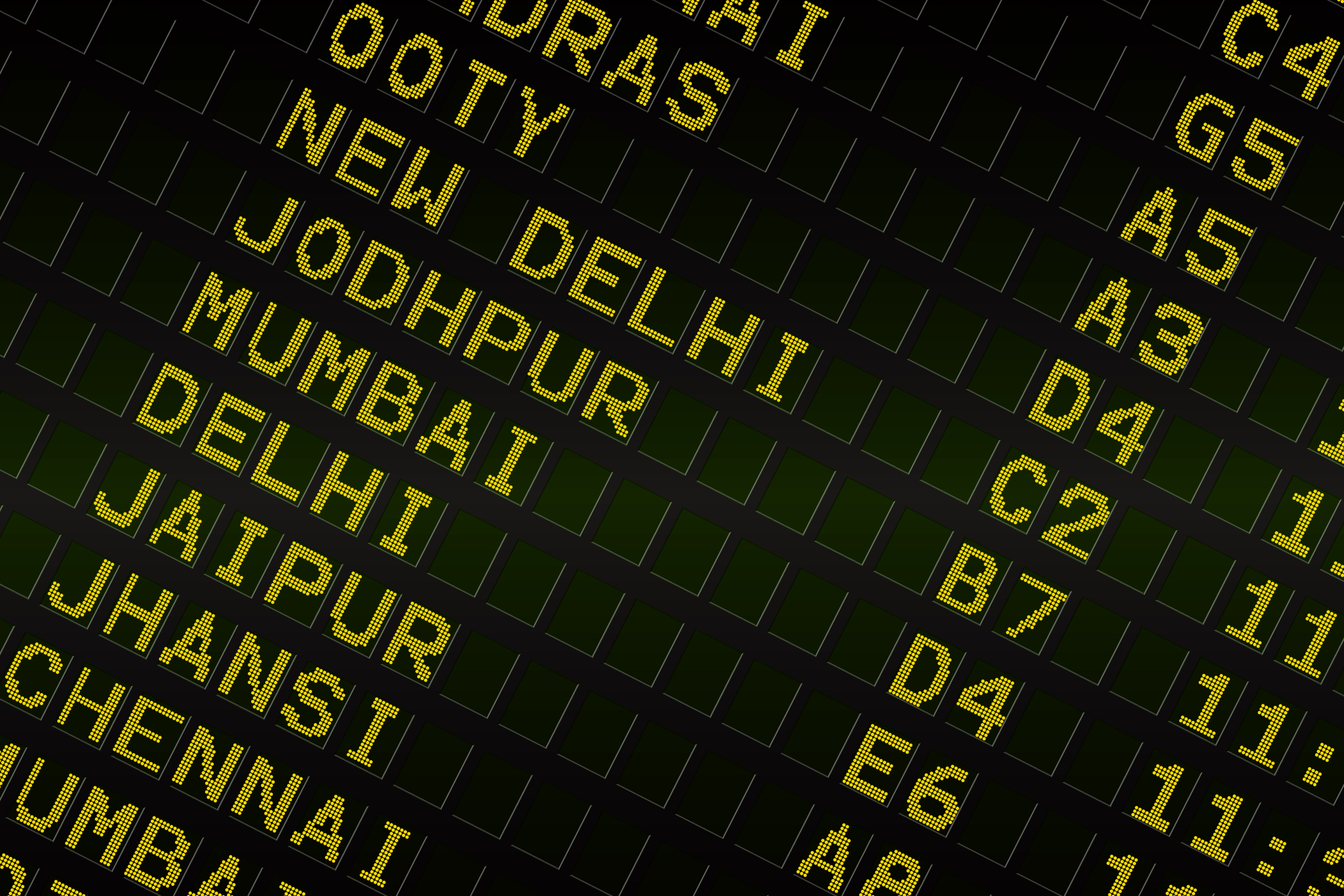How India Is Preparing for Its Goal of 1 Billion Airline Passengers

Photo Credit: Digitally generated black airport departures board for india. Getty Images / Wavebreakmedia
The Indian ministry of civil aviation has set a long-term goal of reaching one billion air passengers by 2040, as stated in their 2019 “Vision 2040 for the Civil Aviation Industry in India” document.
The country recognizes the need to focus on growing infrastructure and hiring manpower to accommodate the growing number of passengers, which is expected to grow six-fold to around 1.1 billion by 2040.
The government also has plans to construct an additional 26 airports under its regional connectivity scheme and invest $11.9 billion to modernize and construct new airports by 2025.
Additionally, India is also increasing the number of flying training organizations and facilities for aircraft maintenance, repair, and overhaul, said Indian civil aviation minister Jyotiraditya Scindia.
As economic growth, rapid urbanization, rising disposable income and a young population push the aviation sector from 14 million domestic passengers in 2013 to 144 million, India would need a civil aviation infrastructure and capability that would be able to support a $20 trillion economy by 2047, Scindia said.
India’s air passenger traffic increased 47 percent year-on-year to 123.2 million passengers in 2022, almost 15 percent lower to 2019.
Speaking at an aviation event in New Delhi this week, Scindia said the civil aviation infrastructure in India has grown from 74 airports in 2013 to 148 airports waterdomes and heliports today.
India’s six metro cities – Delhi, Mumbai, Chennai, Bengaluru, Kolkata and Hyderabad - today have a capacity of close to 192 million passengers. “In the next four years these cities will have a capacity of 420 million passengers per year,” Scindia said.
He further said that by the end of this year Delhi Airport will grow from the current 70 million to 100 million passengers.
Talking about increasing fleet size to accommodate a growing number of air passengers, Scindia also he expects India's fleet to grow from the present 700 to over 2,000 planes in the next five to seven years.
The minister also cited Air India’s record order of 470 aircraft touted as the largest order in international civil aviation history.
However, this record order of Air India has also brought to the fore a debate on market access as foreign carriers, mostly Middle Eastern ones, have been seeking additional capacity to serve more routes in India.
Many carriers fear that Air India’s 470 jets may capture most of the market.
Dubai’s Emirates, Turkish Airlines and Kuwaiti carrier Jazeera Airways have all called for sharp increases in air traffic rights to and from India to meet demand.
While Dubai has requested an extra 50,000 seats a week from about 65,000 a week on India routes, Kuwait’s Jazeera Airways has called for the current weekly allowance to be taken up from the present 12,000 seats to 28,000 seats.
However, speaking to Reuters, India’s civil aviation minister Jyotiraditya Scindia has said that the country has no plans to increase air traffic rights for the United Arab Emirates.
Scindia instead urged domestic carriers to fly long haul and help establish new hubs.
Here it’s worth noting that following the merger of Air India and Vistara, India would be left with only one full-service carrier.
In his interview to Reuters, Scindia said Air India's widebody plane order and IndiGo's twin-aisles to some destinations were signs that “transition” had begun.
“The minute you give direct connectivity to international locations directly from Delhi, any passenger is going to prefer a direct connect, rather than going through another country's hub,” he said.
